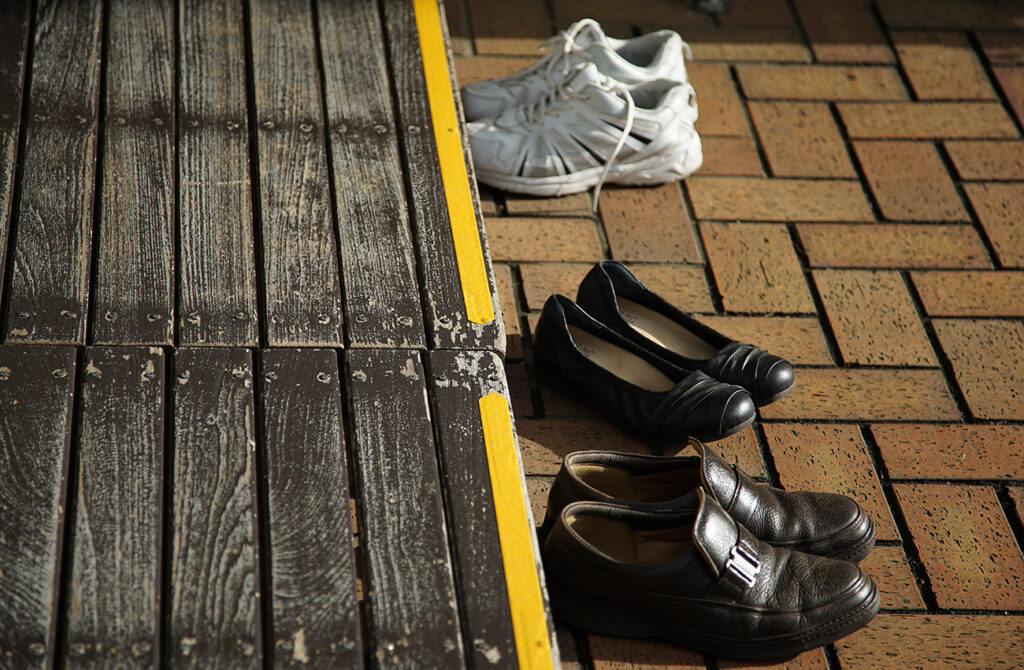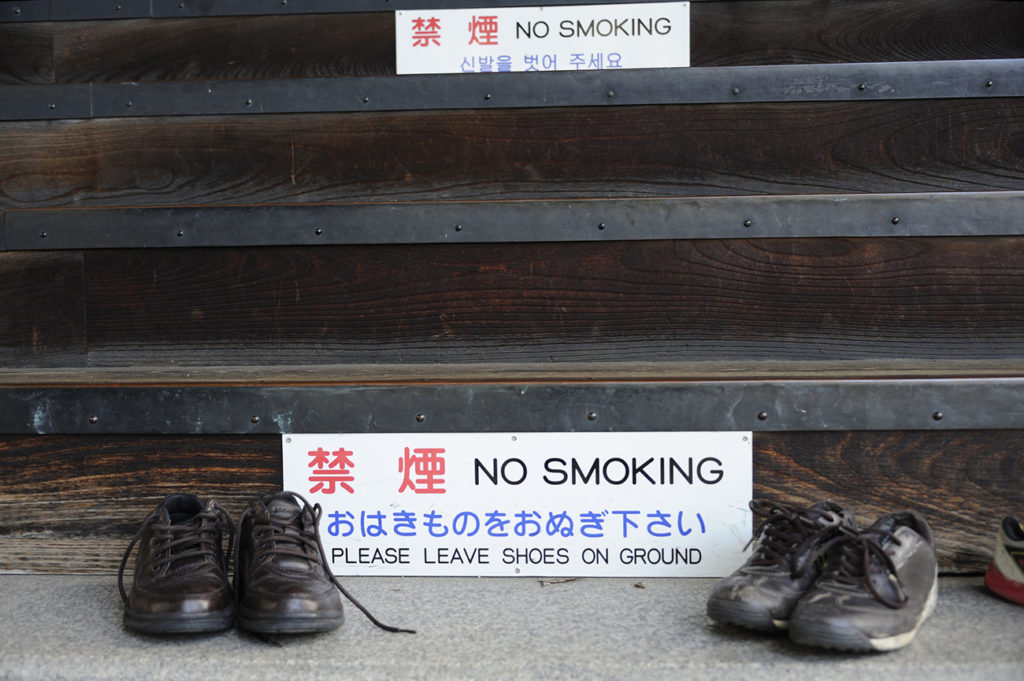
The Japanese Culture of Removing Shoes
In Japan, the custom of removing shoes before entering a home extends beyond residences to various other places like temples, shrines, hot spring resorts, traditional inns, and even some schools. This culture of removing shoes is deeply rooted in Japanese cultural and religious beliefs.
Origins of removing shoes
The tradition of removing shoes has roots in Middle Eastern and Indian subcontinent religions, where it symbolizes reverence and respect in sacred spaces. Biblical narratives and cultural beliefs emphasize the importance of cleanliness and humility before the divine.
 Cleanliness in Shinto and Buddhism
Cleanliness in Shinto and Buddhism
In Japan, Shinto and Buddhism greatly influence cultural norms around cleanliness. Shinto, emphasizing purity with the saying “cleanliness is godliness,” values ritual purification. Buddhism, particularly Zen Buddhism, teaches that daily activities like cleaning and cooking are spiritual acts, reinforcing the significance of cleanliness in Japanese life.
Japanese shoe etiquette
In traditional Japanese homes, the boundary between indoors and outdoors is marked by a genkan, a transitional space where shoes are removed. It’s essential to avoid stepping onto the elevated indoor area with outdoor footwear and to align removed shoes neatly facing the door.
Upon entering, hosts typically provide slippers for guests to wear indoors. It’s considered impolite to be barefoot inside a home. Always wear socks when using these indoor slippers, except in rooms with tatami flooring where slippers must be removed.
Toilet and washroom etiquette
Special toilet slippers are often provided for use in bathroom areas. Remember to remove these slippers before entering other rooms to maintain cleanliness.
By adhering to these customs, visitors honor Japanese traditions and show respect for the cultural values of cleanliness and reverence in sacred and private spaces.

